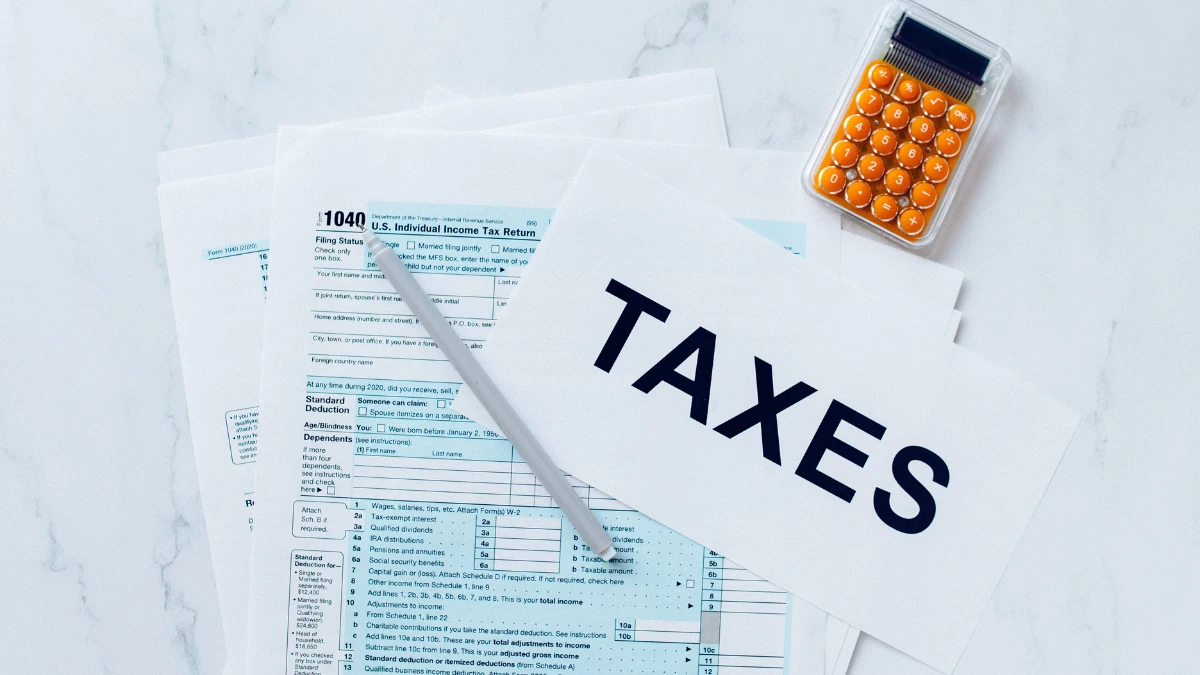At 41, I was stressed about money and worried I’d never escape the corporate grind. My savings account was embarrassingly small, and retirement felt like a distant dream that required working until 65 or beyond.
But something clicked when I realized most people retire broke, not because they don’t earn enough, but because they make the wrong financial moves during their peak earning years. I decided to change everything.
By implementing 10 strategic money moves throughout my 40s, I built a $2.3 million portfolio and walked away from my job at 55.
Here’s exactly how I did it and why these same strategies can work for you, even if you’re starting later than you planned.
1. Build a Strong Financial Foundation

Creating a solid base starts with eliminating high-interest debt. Credit cards charging 18% annually will destroy any investment gains you might earn.
Pay these off first, then tackle personal loans and other consumer debt. Once debt disappears, you free up cash flow that can work for your future instead of enriching credit card companies.
Emergency funds come next in building this foundation. Six months of expenses provides basic security, but aiming for 12 months gives you real peace of mind.
This buffer lets you take calculated risks with investments without worrying about short-term market drops. When you know your basic needs are covered, you can invest more aggressively for growth.
Multiple income streams complete the foundation. Side hustles, rental properties, or freelance work create financial resilience that a single job cannot provide.
Diversified income protects against layoffs and creates extra money to accelerate your wealth building. Strong foundations support tall buildings, and the same principle applies to your financial life.
2. Maximize Retirement Account Contributions

Tax-advantaged accounts represent free money from the government through deferred taxes and employer matching. In 2024, you can contribute $23,000 to a 401(k), plus another $7,500 if you’re over 50.
Missing these contributions means leaving money on the table that compounds tax-free for decades.
Employer matching programs offer immediate 100% returns on your contributions. Many companies match 50% of contributions up to 6% of salary.
Someone earning $100,000 who contributes 6% receives an additional $3,000 from their employer. This guaranteed return beats any investment strategy you’ll find elsewhere.
Starting these maximum contributions at age 40 still allows 15 years of growth before early retirement. A 401(k) maxed out annually with modest employer matching can grow to $700,000 by age 55, assuming reasonable market returns.
Traditional and Roth options provide tax flexibility in retirement, letting you optimize withdrawals based on your tax situation each year.
3. Invest Consistently and Early

Automation removes emotion from investing decisions and ensures consistent contributions regardless of market conditions.
Set up automatic transfers from checking to investment accounts right after payday. This “pay yourself first” approach treats investing like any other bill that must be paid monthly.
Dollar-cost averaging through regular investments smooths out market volatility over time. Buying shares during market drops lowers your average cost basis, while continuing purchases during rises ensures you participate in growth.
This strategy works especially well with broad market index funds that track the overall economy.
Compound growth accelerates wealth building even when starting in your 40s. A $2,000 monthly investment earning 7% annually grows to approximately $600,000 over 15 years.
The final years contribute disproportionately to total wealth as compound interest builds momentum. Time in the market beats timing the market every single time.
4. Focus on Saving a High Percentage of Income

Successful early retirees typically save 30% to 50% of their income during peak earning years. This aggressive rate requires sacrifice but dramatically shortens the path to financial independence.
Each additional percentage point saved reduces working years and brings retirement closer.
Tracking expenses reveals surprising spending patterns that most people never notice. Small recurring charges like subscriptions, frequent dining out, and impulse purchases add up to thousands annually.
Apps and spreadsheets help identify these money leaks so you can redirect funds toward investments instead.
Banking salary increases rather than upgrading lifestyle create exponential savings growth. When income rises by $10,000, save the entire increase instead of inflating expenses.
This keeps living costs steady while supercharging wealth accumulation. Lifestyle upgrades feel good temporarily, but financial freedom lasts forever.
5. Control Lifestyle Inflation

Lifestyle inflation silently destroys wealth-building potential by matching spending increases to income growth.
The bigger house, luxury car, and expensive vacations that come with promotions steal money from your future self. Maintaining current living standards while earning more creates massive savings opportunities.
Question every spending increase carefully before committing to higher monthly expenses.
That $800 car payment seems reasonable with a raise, but invested at 7% annual returns, it becomes $240,000 over 20 years. Many purchases that feel necessary are wants disguised as needs.
Contentment with current possessions fights against society’s pressure to constantly upgrade everything. Your three-year-old car still runs reliably, your home meets your family’s needs, and last year’s phone works fine.
Avoiding upgrade traps keeps money in investment accounts where compound growth works its magic.
6. Optimize Taxes

Strategic tax planning can save hundreds of thousands over your working years. Roth accounts offer tax-free withdrawals in retirement, making them valuable for early retirees who may have decades before accessing Social Security.
Converting traditional retirement funds to Roth accounts during lower-income years reduces future tax burdens significantly.
Geographic arbitrage through relocation provides immediate tax savings for many retirees. States like Florida, Nevada, and Texas impose no state income tax, while others like California can claim over 13% of your withdrawals.
A $100,000 annual withdrawal from your portfolio could cost $20,520 in California taxes versus zero in Florida.
Tax-loss harvesting and asset location strategies help minimize annual tax bills during accumulation years.
Placing tax-inefficient investments in retirement accounts while keeping tax-efficient index funds in taxable accounts optimizes your overall tax situation.
These techniques require attention but can add years to your portfolio’s longevity through reduced tax drag.
7. Invest in Growth Assets

Stocks historically deliver the returns necessary for early retirement goals despite short-term volatility.
Over long periods, equities have averaged 7% to 10% annual returns while bonds typically yield 2% to 5%. This difference compounds dramatically over 15 to 20 years of wealth building.
Growth-oriented portfolios require courage during market downturns but reward patience with superior long-term performance. Many successful early retirees maintain 70% to 80% stock allocations even into their 50s.
Conservative bond-heavy portfolios rarely generate enough growth to support early retirement unless you save enormous amounts.
Index funds provide broad market exposure at minimal cost, making them excellent vehicles for growth investing. The S&P 500 has delivered solid returns over decades while charging fees under 0.1% annually.
These low costs mean more of your money compounds rather than paying fund managers who often underperform the market anyway.
8. Maintain a Balanced Portfolio

Diversification across asset classes protects wealth without sacrificing long-term growth potential.
Real estate investment trusts, international stocks, and different company sizes create a portfolio that weathers various market conditions. No single investment performs well consistently, so spreading risk makes sense.
Rebalancing forces you to sell high-performing assets and buy underperforming ones, naturally implementing a buy-low-sell-high strategy.
Annual rebalancing works well for most investors, though some prefer quarterly adjustments. This discipline prevents any single asset class from dominating your portfolio during bull markets.
Monte Carlo simulations help test withdrawal strategies before retirement arrives. These computer models run thousands of scenarios to estimate success rates for different spending levels.
Financial advisors use these tools to show that $2 million portfolios succeed 96% of the time with $3,000 monthly withdrawals but only 74% with $7,000 monthly spending.
9. Avoid Lifestyle Debt

Consumer debt destroys wealth-building momentum through high-interest charges that compound against you instead of for you.
Credit card balances charging 18% to 24% annually make it nearly impossible to build wealth since few investments can reliably beat those rates after taxes.
Cash purchases for depreciating assets like cars prevent years of monthly payments that drain investment potential.
A $500 monthly car payment invested at 7% annual returns grows to $150,000 over 15 years. Used cars often provide reliable transportation at a fraction of new car costs.
Financing should be reserved for appreciating assets like real estate that can generate rental income or tax benefits.
Even then, mortgage debt should be managed carefully since paying off loans provides guaranteed returns equal to the interest rate. Each dollar of debt eliminated is one less dollar that must be supported by your retirement portfolio.
10. Plan for Longevity and Inflation

Retirement could last 30 to 40 years for someone leaving work at 55, requiring careful planning for inflation’s cumulative impact.
Healthcare costs typically rise faster than general inflation, averaging 4% to 6% annually compared to the overall 3% inflation rate. These higher costs can significantly erode purchasing power over decades.
Withdrawal rates must account for sequence of returns risk, where poor market performance early in retirement can permanently damage portfolio sustainability.
Conservative withdrawal rates of 3% to 3.5% provide better long-term success than the traditional 4% rule, especially for early retirees with longer retirement periods.
Healthcare expenses represent one of the largest unknowns in early retirement planning. Private insurance costs $1,000 to $2,000 monthly for many early retirees since employer coverage ends and Medicare doesn’t begin until 65.
Setting aside $300,000 specifically for healthcare provides a buffer against these substantial costs.

